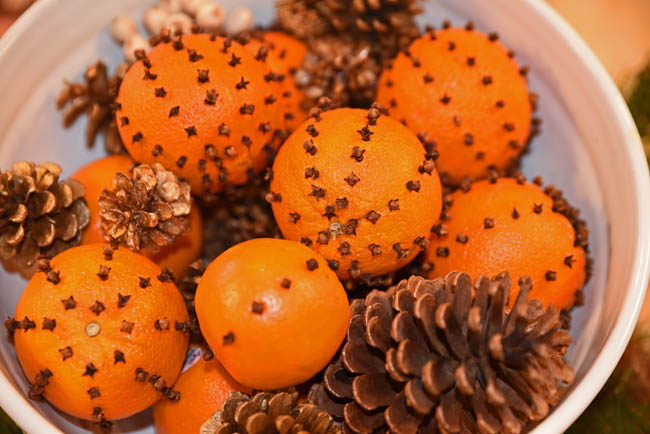
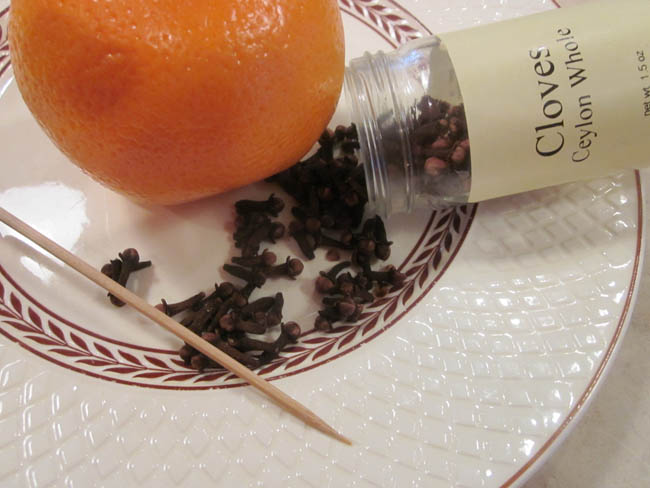 Materials: Oranges (or other citrus fruit, if you would like), a wooden skewer (a toothpick or small nail works too), and whole cloves.
Materials: Oranges (or other citrus fruit, if you would like), a wooden skewer (a toothpick or small nail works too), and whole cloves.
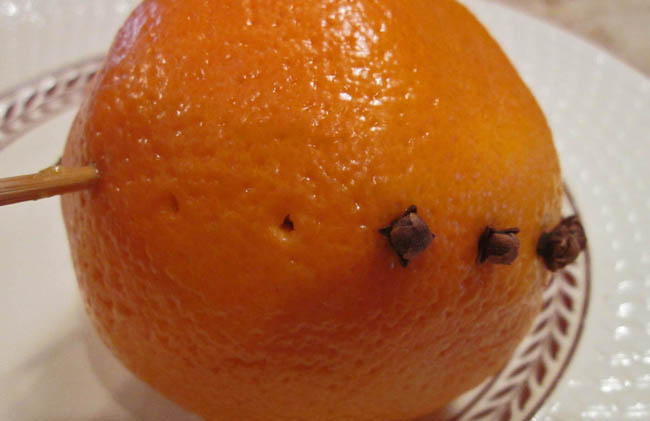
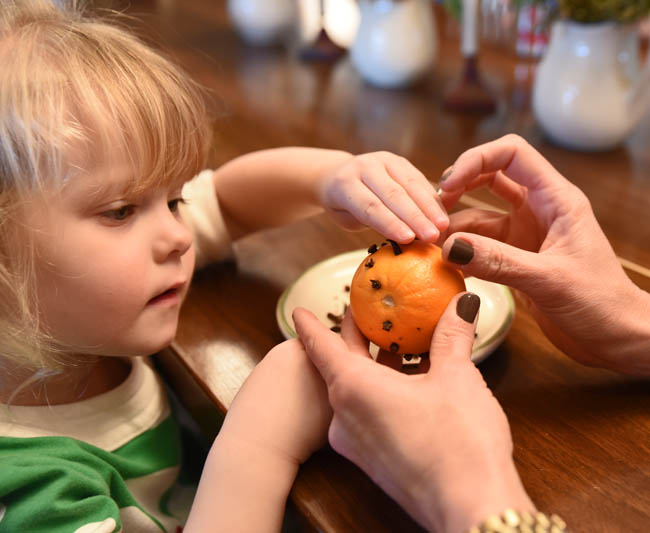
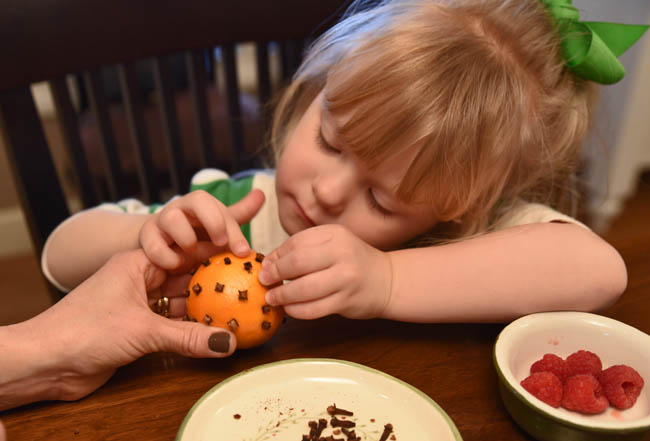 Steps: Pierce the orange with a wooden skewer and insert whole cloves. There you have it, it’s that easy (raspberry snack optional). Ideas for what to do with the finished product, how to take things up a notch if you’re a little fancier than the Olson girls, and how to preserve the sweet smelling spheres, are all included below.
Steps: Pierce the orange with a wooden skewer and insert whole cloves. There you have it, it’s that easy (raspberry snack optional). Ideas for what to do with the finished product, how to take things up a notch if you’re a little fancier than the Olson girls, and how to preserve the sweet smelling spheres, are all included below.
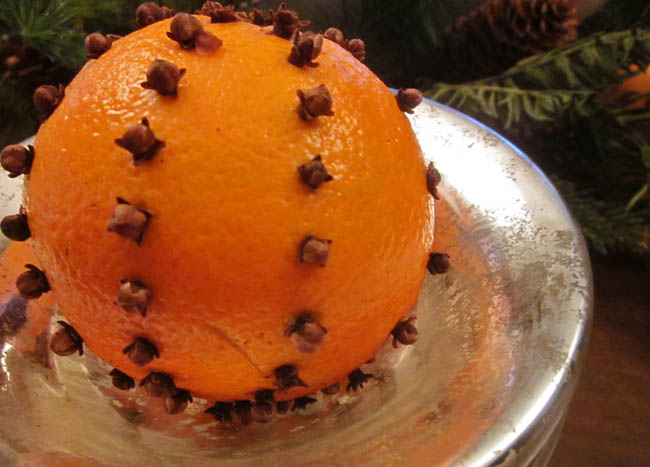
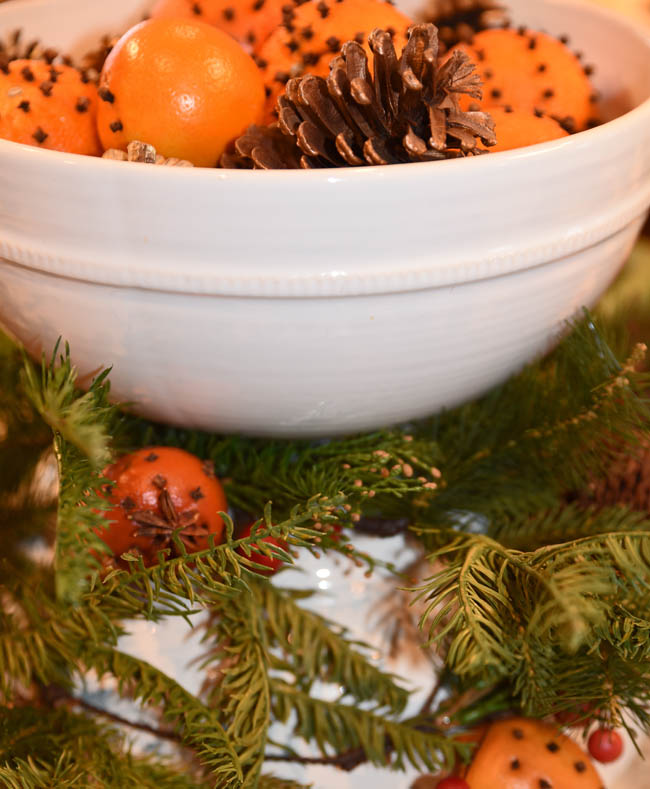
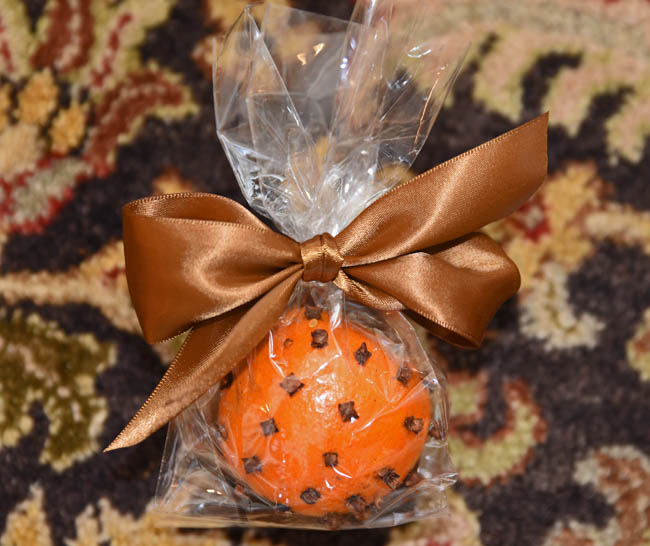
Ideas for the finished pomanders:
- Place in a bowl with faux pine or berries and pine cones for a lovely centerpiece
- Enclose in a cellophane bag with nice ribbon for a simple and singular gift
- Tie a ribbon around smaller pomanders and use as fresh, fragrant ornaments on the tree
- Use them as natural air fresheners in bowls (and even in drawers) throughout the house
If you want to take things up a notch, there are a few things you can do when decorating these with the cloves. I happen to like how they look without a lot of fuss in the design and I also happen to like how not having too much going on holds Ella’s attention and keeps both of us from getting frustrated! But if you’re fancy:
- Make other designs in the orange with a citrus zester
- Use rubber bands to ensure perfect straight lines
- Finish the pomanders by rolling them in other spices such as ground nutmeg or cinnamon
Tips for pomander longevity:
The pomanders are wonderfully spicy and sweet smelling just after being pierced, but taking a few steps to dry them will prevent mold and preserve their fragrance. Enjoy them fresh for a while, but then tie twine around them and hang them in a cool dry place to dry (for about a week). Martha Stewart advises to use orrisroot powder as a drying agent. Of course she does. I don’t really know what that is, and have a feeling that it costs more than the decoration itself. I don’t like either of those factors when thinking of a fun and simple craft. But it’s an option.
Reality Check. I feel as though it’s the responsible thing to do to provide the directions about drying the pomanders, but I live in a climate where right now – between the frigid temps outside and the high furnace heat inside – I am on a constant mission to keep my hands and lips moisturized (without success). So my pomanders are going to dry naturally, just fine. I may rotate the things every once in a while, but I don’t foresee an issue with mold such that I have to take any steps with this project other than what you see above with me and Ella.
